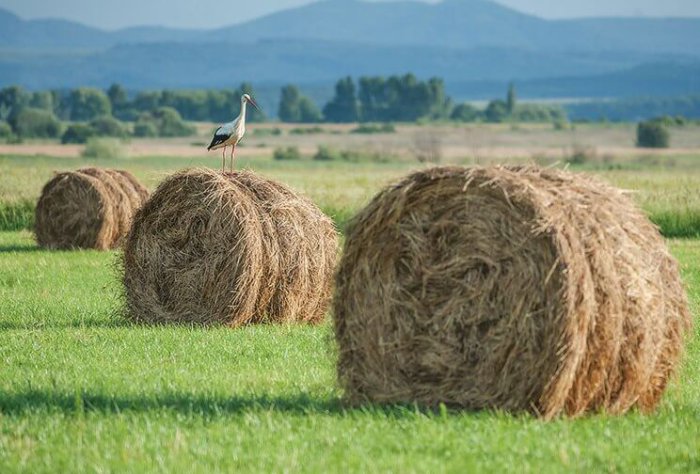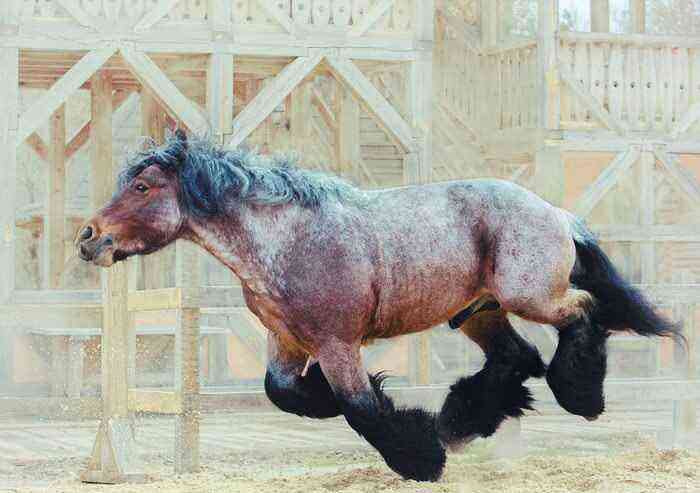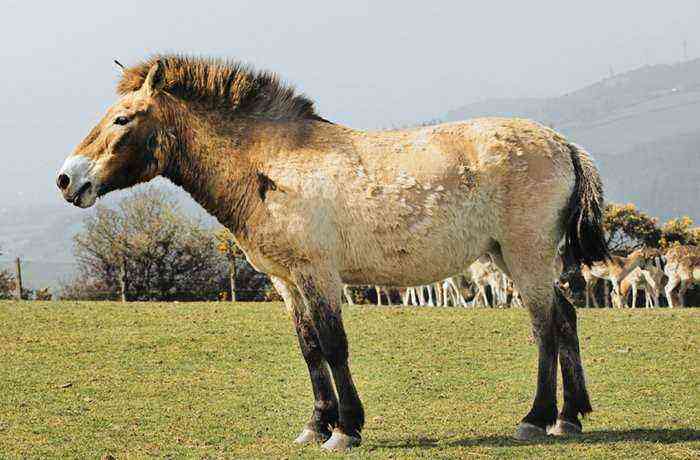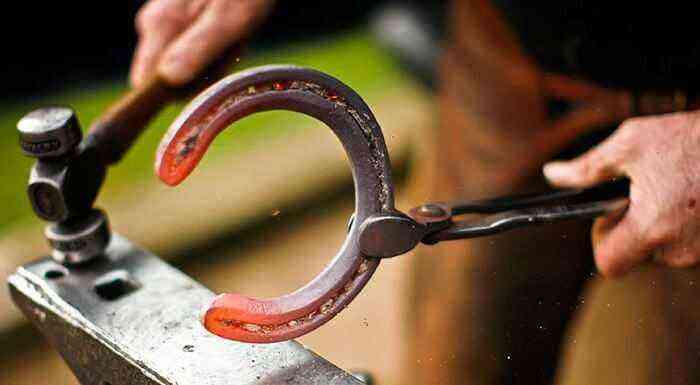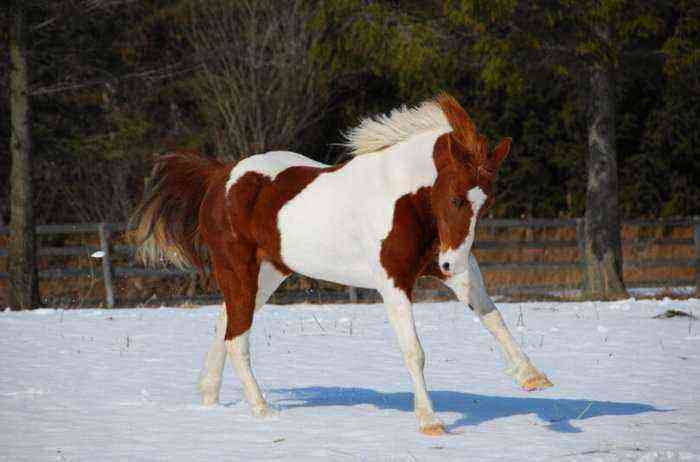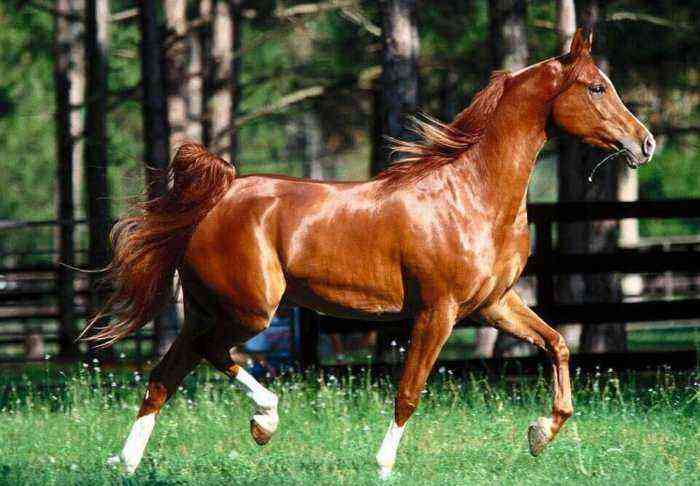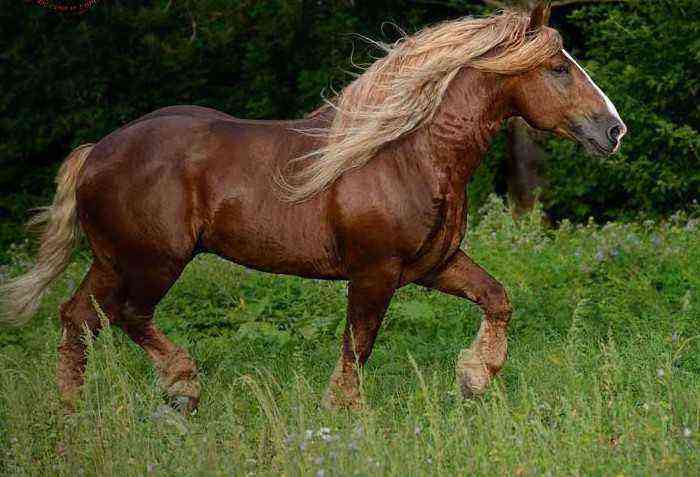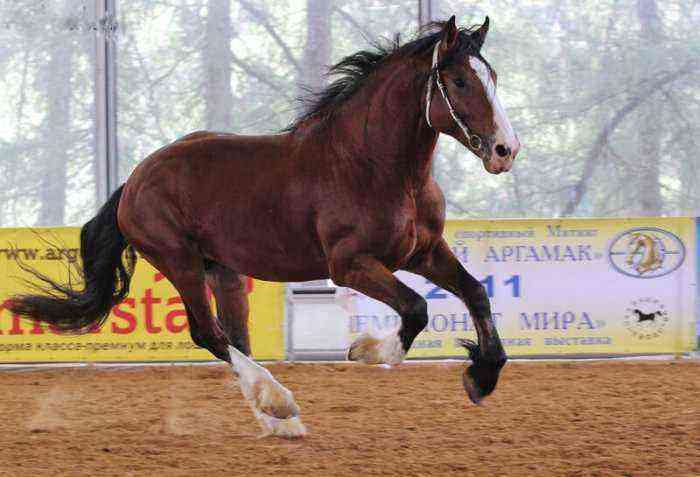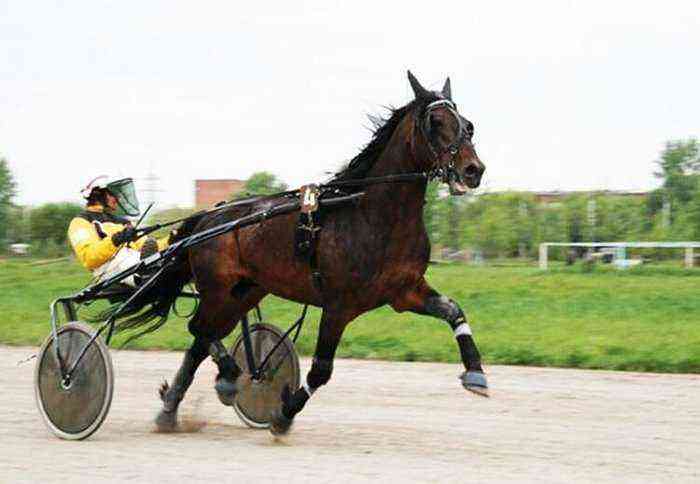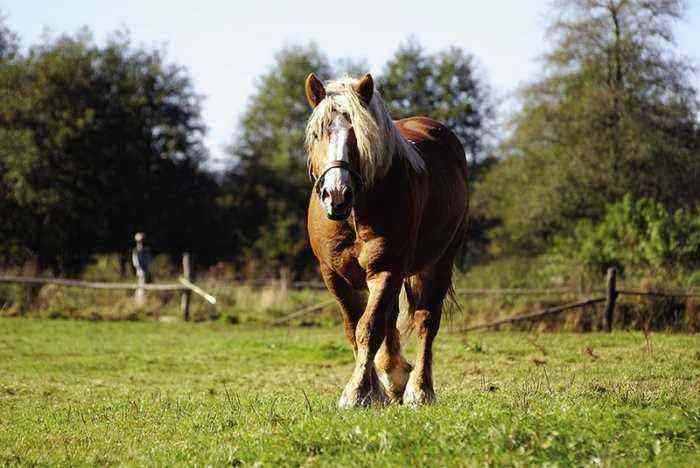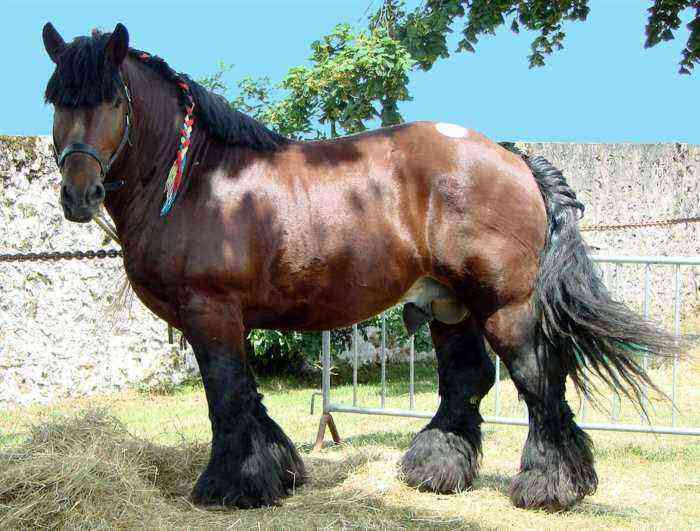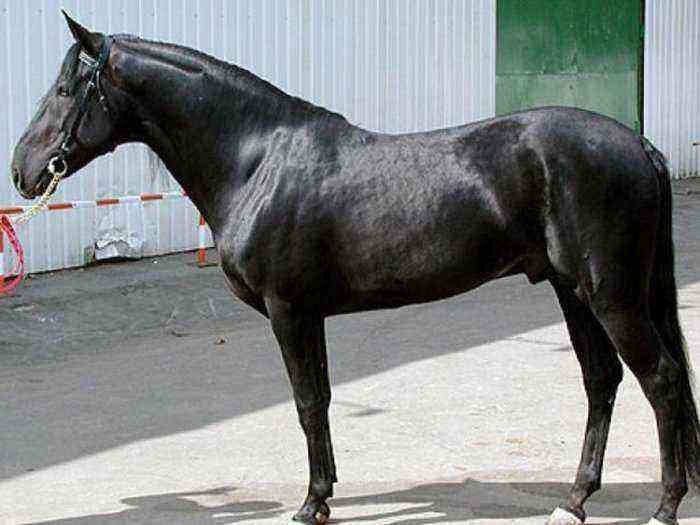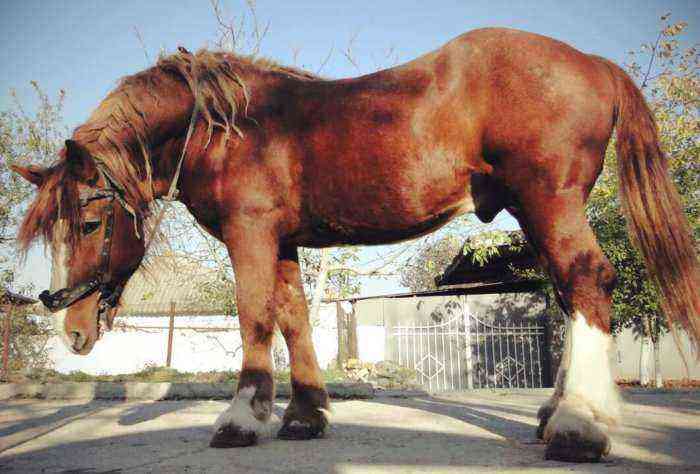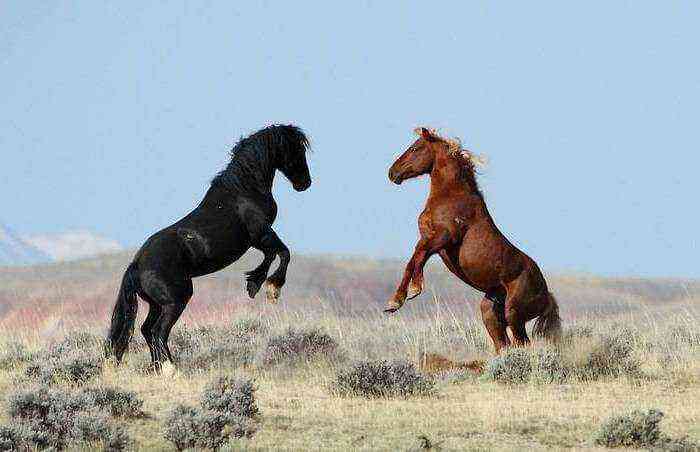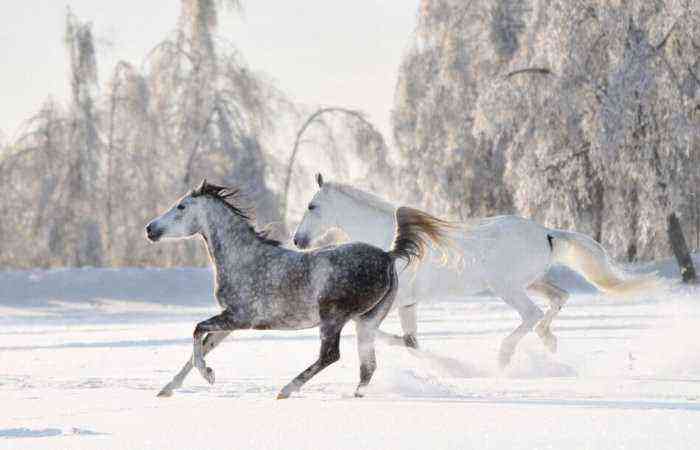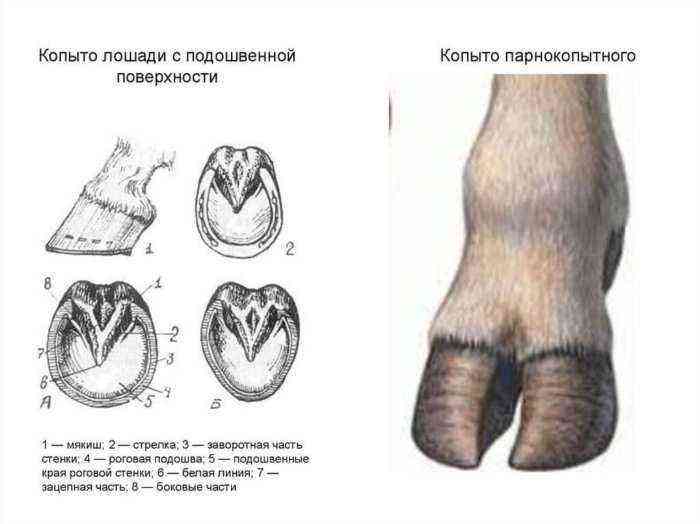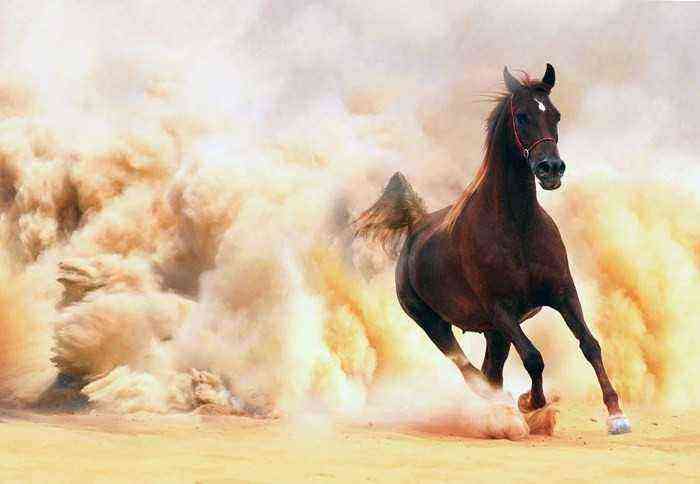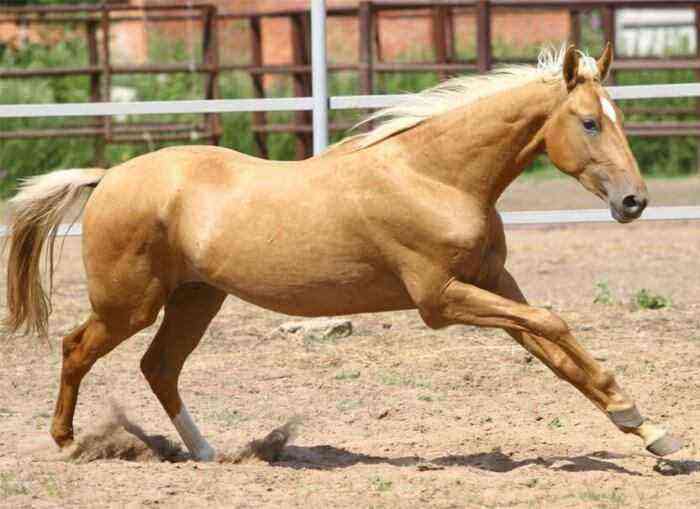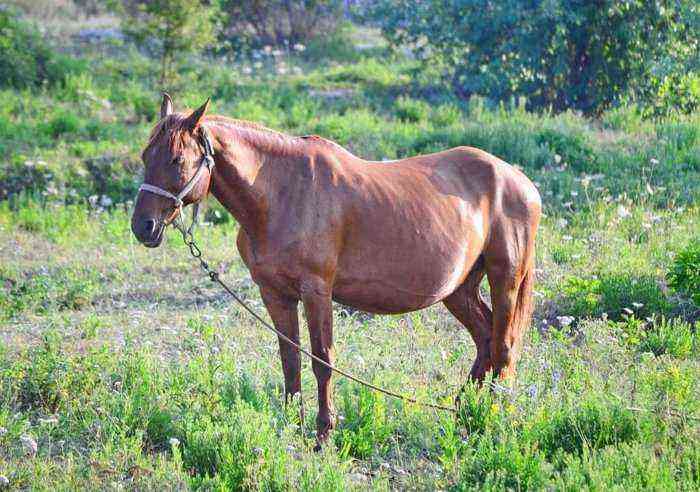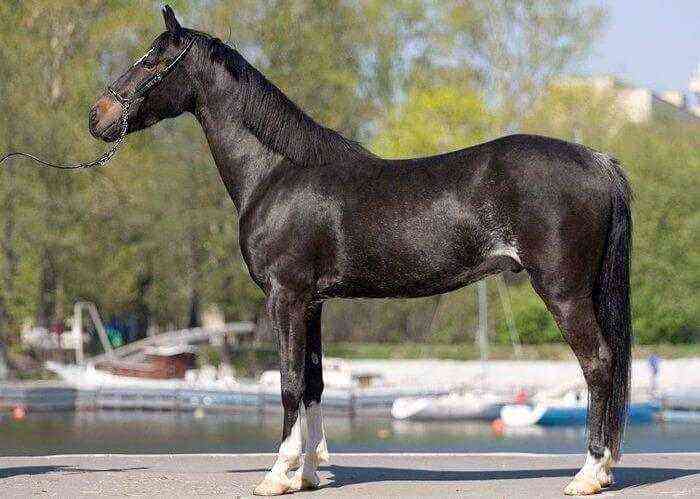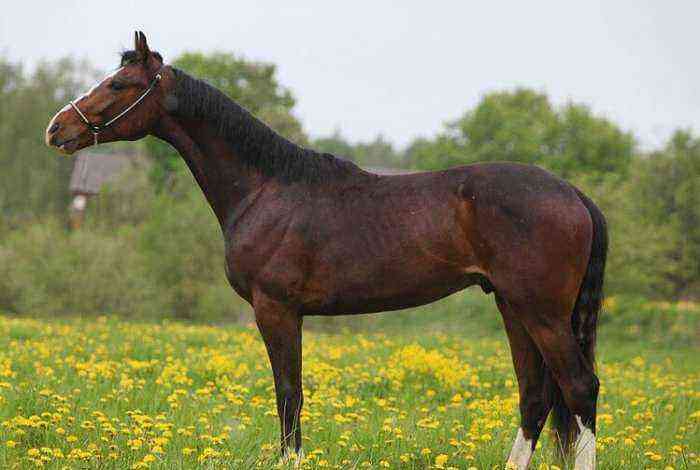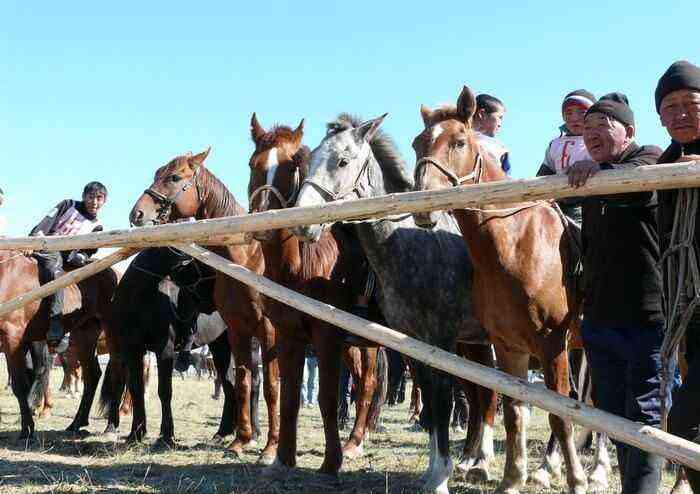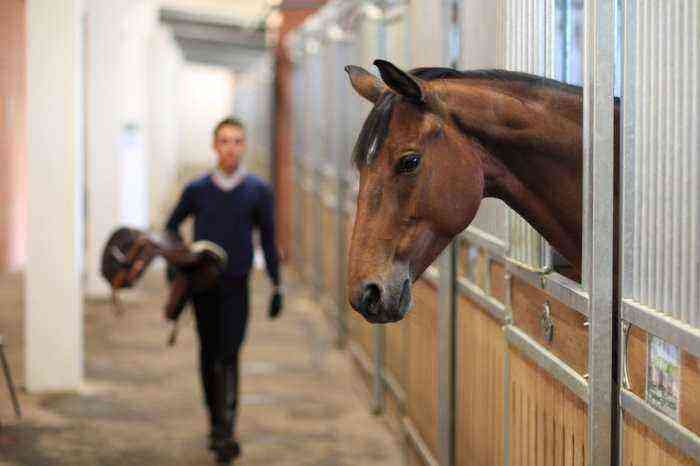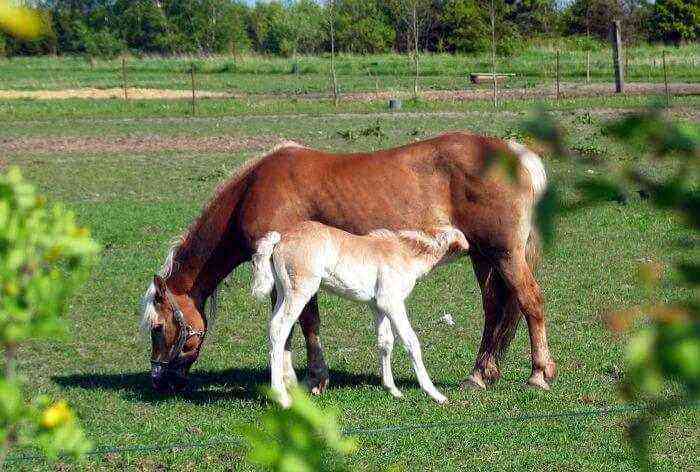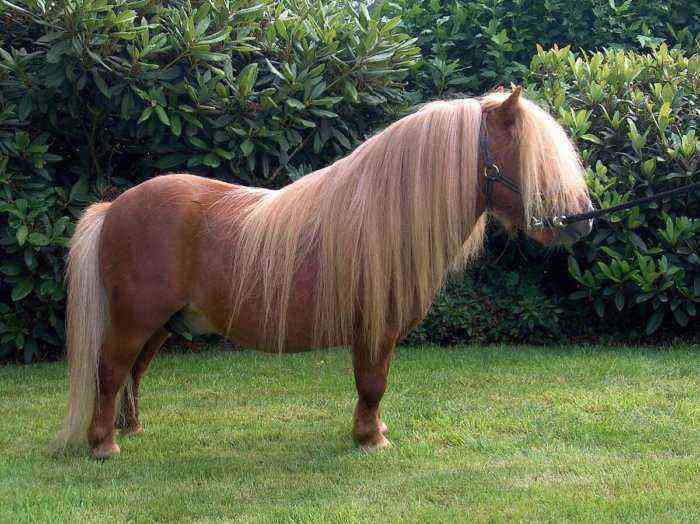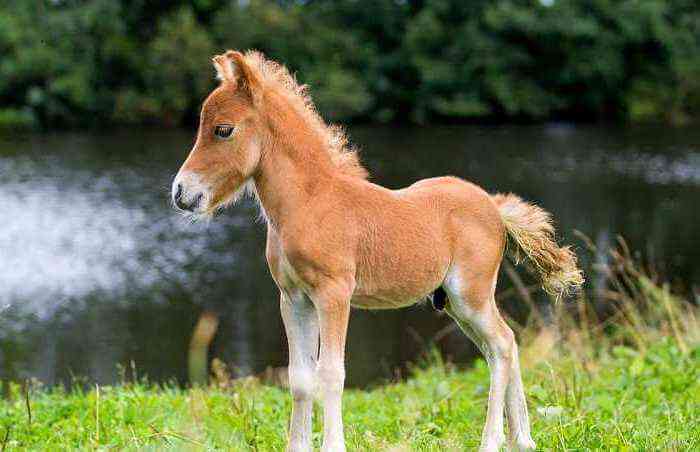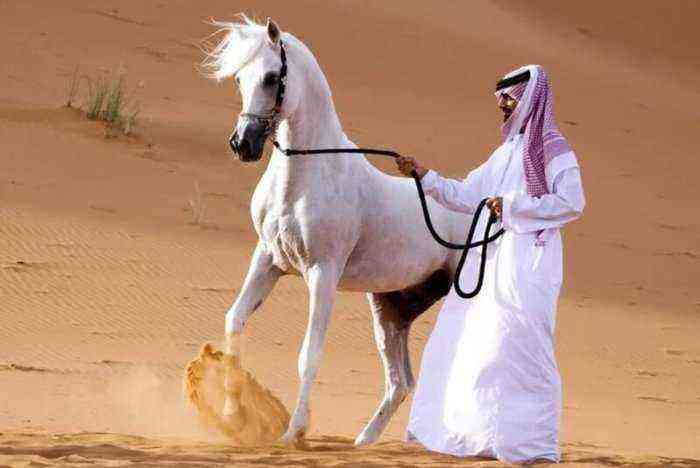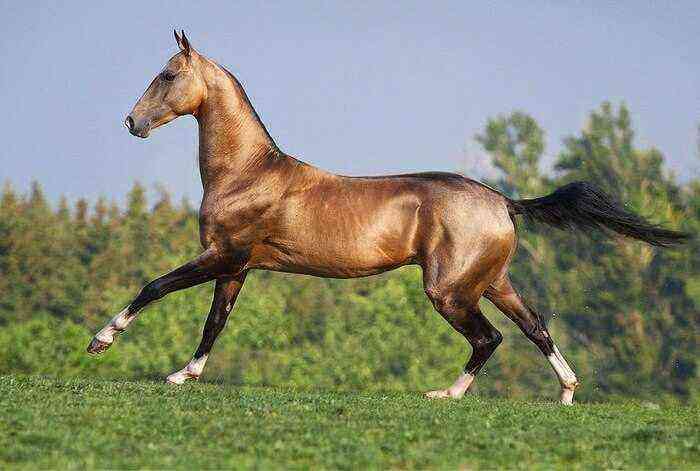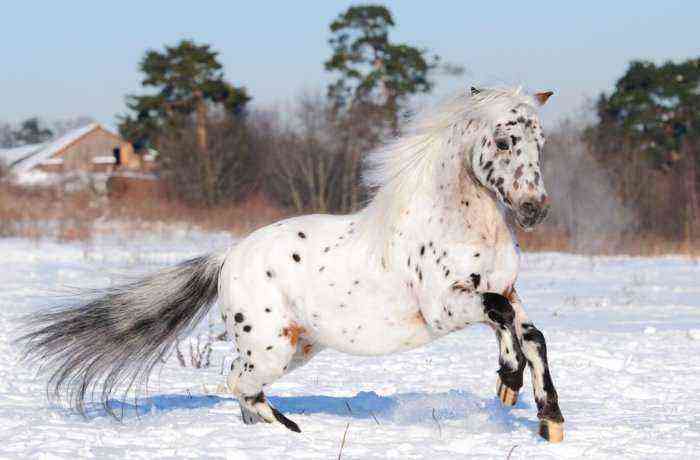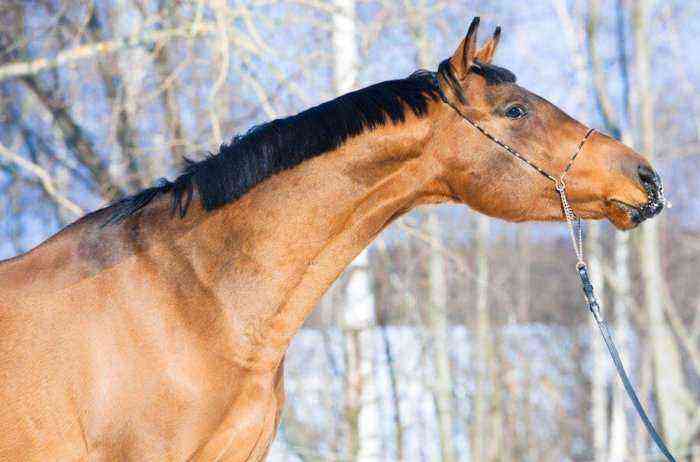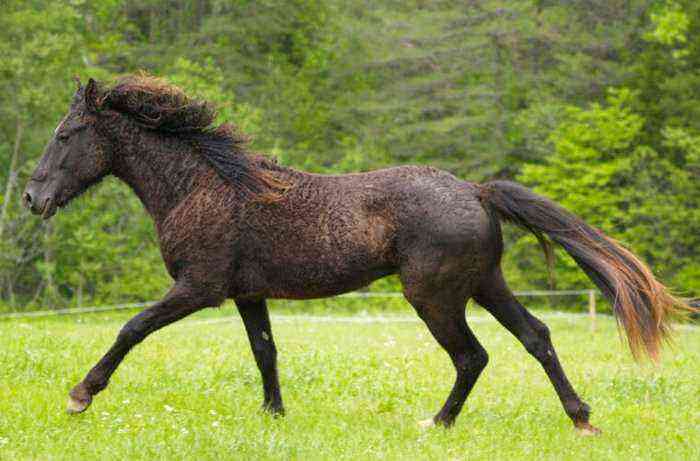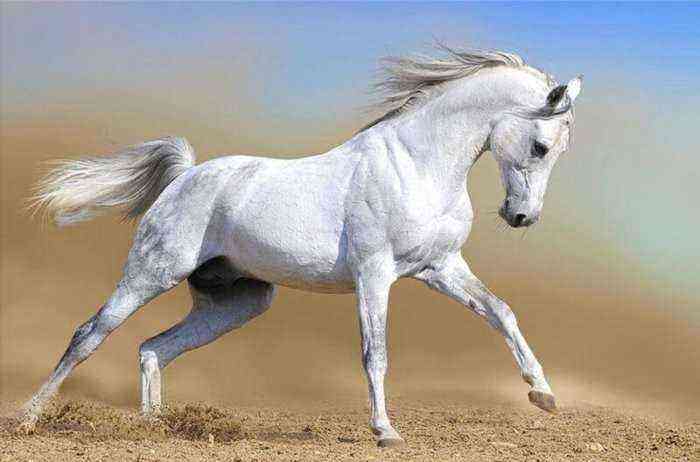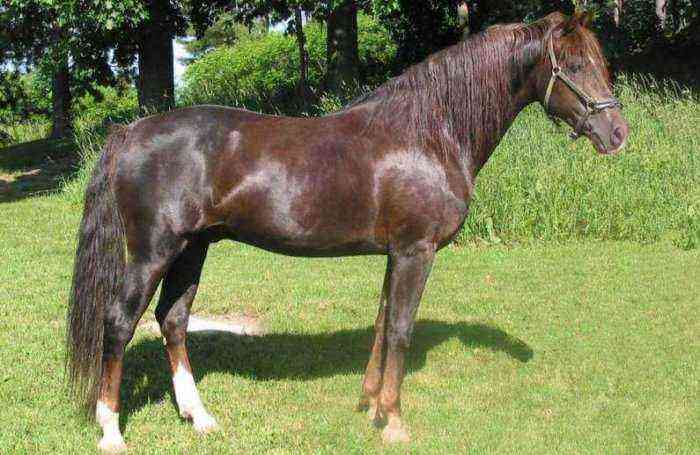The Don breed of horses belongs to the riding-draft. It appeared in the 18-19 centuries on the territory of the modern Rostov region. Although these horses are not suitable for racing, as they are not capable of developing high speed, they are famous for their endurance. The Don Cossacks covered 200-300 km on these horses per day, while the animals could manage with a meager food supply.
Don horse breed
History of the breed
The Don horse comes from local steppe species that crossed with stallions of eastern breeds – Turkmen, Persian, Karabakh. The Cossacks brought them as trophies. Representatives of thoroughbred riding and Arabian breeds also influenced the formation of the Don horse.
The first stud farms on the Don opened in the XNUMXth century. The horses that were bred there were distinguished by good maneuverability, unpretentiousness in feed and endurance. They showed the qualities inherent in combat horses. They decided to improve the local breed with the influx of Arab blood.
The result of the work carried out pleased. At the exhibition in 1910, new horses were appreciated. The horses were distinguished by their elegant appearance, dry physique and beautiful golden-red coat color. The breed was officially recognized and named Don. Breeding stallions were used to improve the characteristics of local horses.
Then the Civil War broke out. The breeding stock in those years was sharply reduced – out of thousands of producers, only a few remained. There was no hope for the restoration of the pedigree line. This situation excited breeders and former officers, they began active work to revive the population of Don horses. In the period from 1920 to 1935, the breed was restored.
After the Great Patriotic War, the horses of the Don Cossacks were repeatedly tested for endurance. They have shown that they are able to cover huge distances with little or no rest. In this regard, they have no equal in the whole world. Today the breed is in decline again. Dozens of heads remained in the ownership of stud farms that bred Don breeding stallions.
Exterior features and character
The Cossack horse is distinguished by its large size and dry physique. The average height of an adult stallion is 160-164 cm. Main characteristics:
- A small, graceful head with a hunched profile and compact mobile auricles. The occiput is narrow. There are white marks on the forehead.
- The eyes are set wide, the look is expressive.
- The neck is curved, long, wide, the withers are well defined.
- The line of the back is straight, the loin is strong, smoothly turning into a powerful croup.
- The chest is massive, muscular, deep.
- The limbs of the Don horse are long, dry and sinewy with large joints and strong hooves.
Common types of coat color are golden-red, bay, in rare cases there are individuals of a black suit. Representatives of this breed are harmoniously built and look elegant.
Depending on the type of physique, there are 4 varieties of Don horses:
- oriental;
- Persian;
- massive;
- riding.
The appearance of the Don horse
Don horses are distinguished by a calm and kind disposition. They readily show obedience to the owner, they are not aggressive. Representatives of the Cossack breed are often used for riding lessons. Animals are loyal to children.
Attention! The Don horse is characterized by unpretentiousness, endurance and adapts well to any climatic conditions.
Donchak breeding
The main breeding stock is concentrated on the territory of the Budyonnovsky stud farm. Stallions and mares selected for reproduction are subject to high demands. Animals are evaluated on a ten-point system, taking into account not only external features and health status, but also character. Females are allowed to breed if they get 7 points, and males – 8 out of 10.
Attention! For mating, individuals are selected at the age of 3–5 years.
Each breeding foal, upon reaching the age of six months, is given a cold brand containing information about the personal serial number and year of birth. It is located at the withers or just above the knee.
Breeding farms prefer the manual method of mating. With this method of fertilization, the risk of injury is reduced. Pregnant mares are not allowed to work hard. They are provided with good nutrition with the addition of mineral and vitamin supplements to the diet.
After the birth, the foal is left with its mother, it feeds on milk up to 7 months. Complementary foods should be introduced from the age of one month. Babies are first offered oats, gradually increasing the portion, and later they begin to feed them with grass, hay and root crops.
Important! Lactation is stopped prematurely if the mare is exhausted or has had a difficult birth.
Nutrition and care of the Don horse
Donchaks are unpretentious to the conditions of detention and easily manage with a small amount of food. Their characteristic feature is the rapid weight loss during intense exercise and the rapid recovery of physical fitness. Don horses are adapted to herd content, even eating grass alone, they are able to gain weight.
The health of mares and stallions directly depends on the correct diet. It must include:
- concentrated feed enriched with protein;
- hay and grass are a source of fiber and vitamins;
- vegetables, root crops.
Hay for Don horses
It is customary to feed Don horses 3-4 times a day. If the animal is involved in hard work, the intervals between eating and work should be at least 2 hours. Experienced horse breeders recommend offering horses a small fraction of the daily amount of hay in the morning. During the second feeding, roughage is given more. In the evening, increase the amount of concentrates.
Animal care includes timely vaccination. It is carried out according to a certain schedule. Some vaccinations are mandatory, for example: against anthrax, influenza, tuberculosis and tetanus. Animals should undergo regular veterinary examinations. This will allow early detection of health pathologies.
Use of the breed today
Compliant and calm character allows using Donchaks for hippotherapy and teaching beginners to ride. Often this horse can be found in the countryside, where it helps to transport small loads.
The Don breed is used in sports. She is good at show jumping and long distance races. Modern Don chaks participate in exhibitions and demonstrate their beauty at festivals.
Cossack horses have an interesting history. They survived several difficult periods and almost disappeared from the face of the earth, but thanks to the efforts of horse breeders, these beautiful animals were saved. Donchaks are valued for their unpretentious disposition, complaisance, ability to adapt to harsh climate, high working capacity and endurance.

